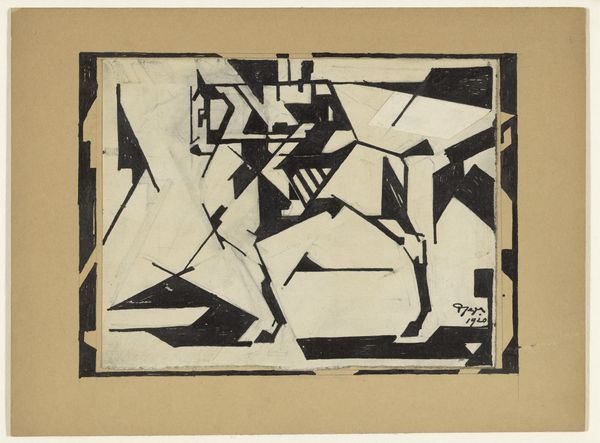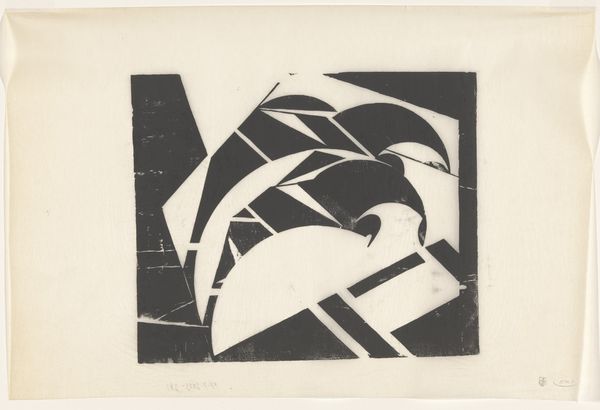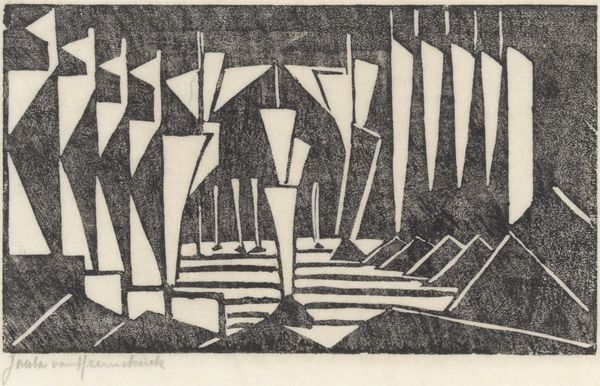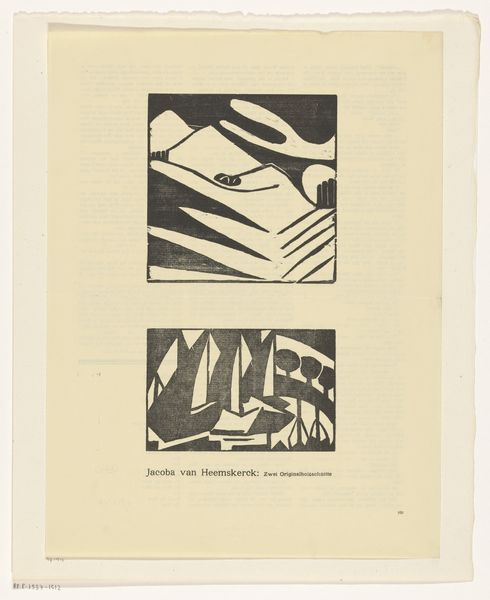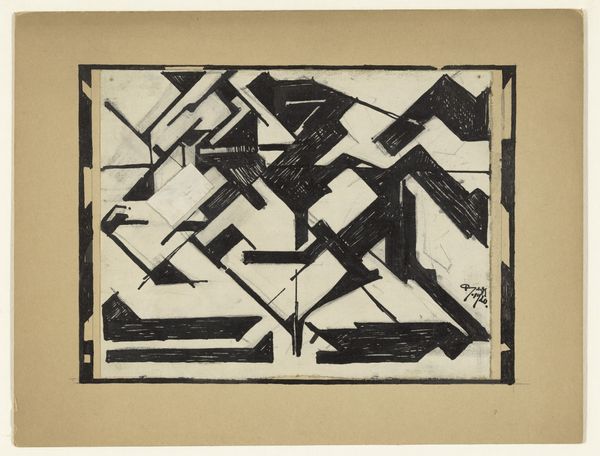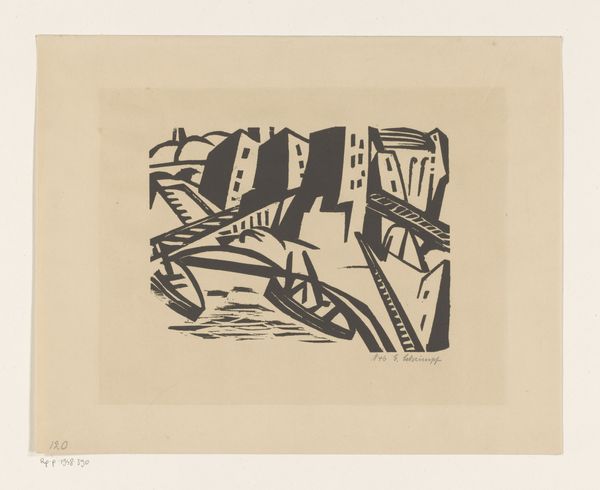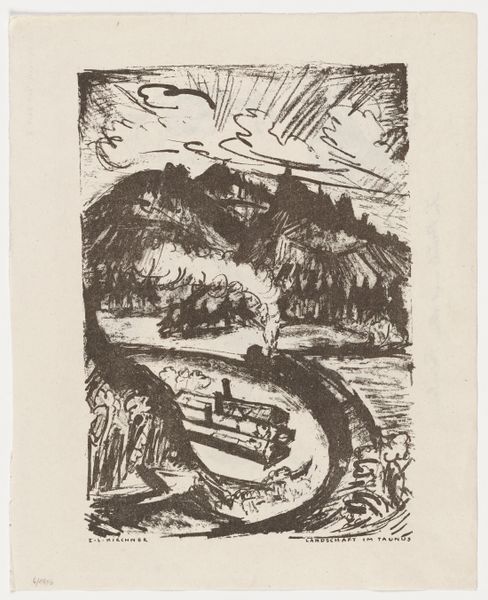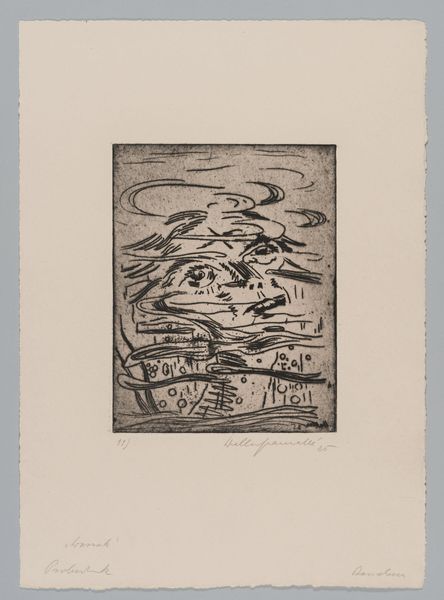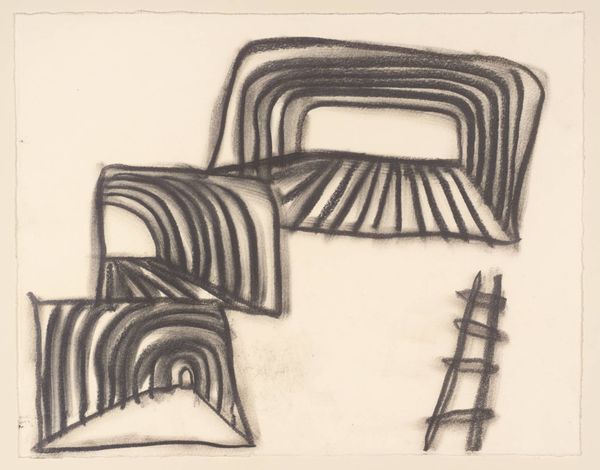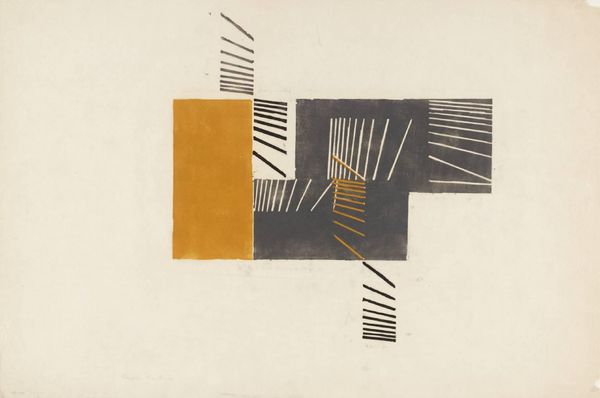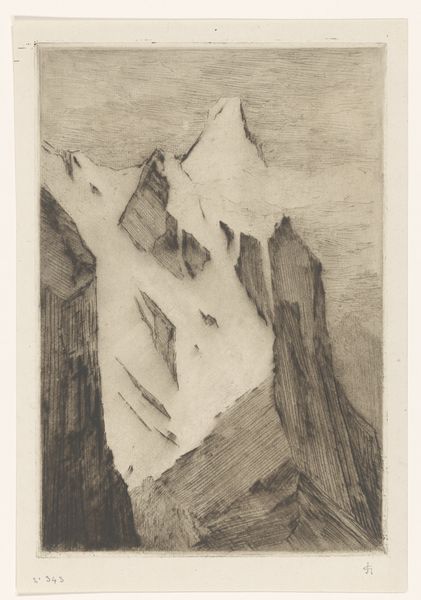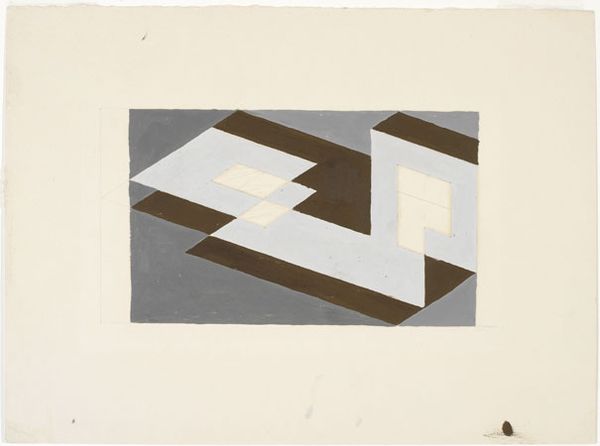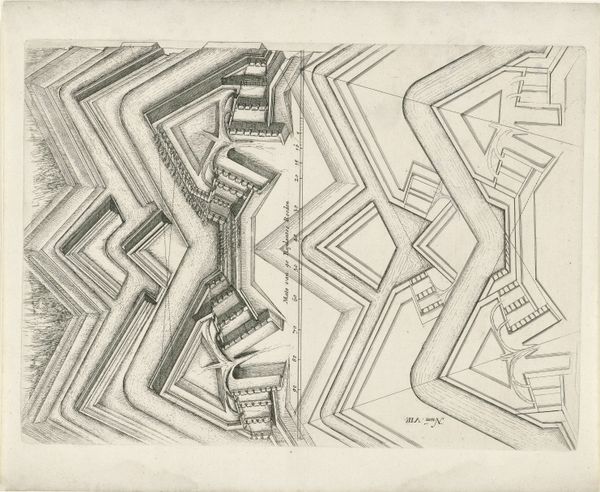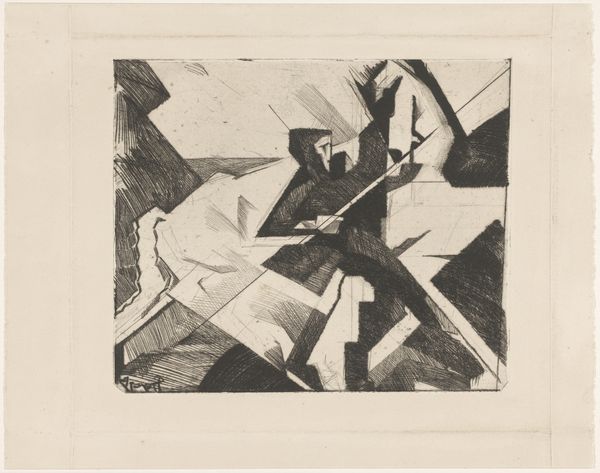
drawing, print, ink
#
drawing
#
cubism
#
linocut
# print
#
landscape
#
etching
#
ink
#
linocut print
#
geometric
#
abstraction
Dimensions: 11 1/2 x 15 1/4 in. (29.2 x 38.7 cm)
Copyright: Public Domain
Curator: Looking at this print, "Composition (Fjord)" by Jacoba van Heemskerck, created sometime between 1891 and 1923, what are your initial thoughts? It's a striking piece, isn't it? Editor: It certainly has a powerful presence. I'm immediately struck by the bold contrast—the black ink against the white creates a kind of raw energy. It almost feels like a blueprint, simplified and industrial. What do you think van Heemskerck was trying to say here? Curator: Given the historical context, and Heemskerck's own background, it's important to situate this "Fjord" within broader discussions of representation. The fractured, geometric forms suggest a Cubist influence, aligning with a period of intense societal and artistic transformation. What’s intriguing is her ability to intersect landscape with such avant-garde abstraction, pushing back against traditional notions of nature and femininity in art. Editor: Yes, the medium – it's likely a linocut or etching given those clean, decisive lines. The technique appears rather economic in its execution – and yet very evocative. It raises the question for me, how accessible would such a print have been at the time, in terms of its production? Could we view this simplified image as an example of making the landscape 'consumable,' easily reproduced and disseminated? Curator: Absolutely. The choice of a printmaking technique certainly democratizes the artwork. While individual drawings might be viewed as singular, precious commodities, prints, through their means of production, enabled a potentially wider audience to access art, a notion tied to burgeoning socialist ideals within early 20th-century Europe. This intersects with ideas surrounding class and taste. Editor: The stark geometry certainly challenges the romanticized, picturesque landscapes prevalent at the time. This rendering focuses instead on line and form which in a sense creates its own type of manufactured landscape - far from untouched wilderness. Curator: Precisely. I think through a contemporary lens, this resonates deeply. Van Heemskerck’s deconstruction compels us to rethink dominant narratives. What does nature really represent when viewed through the machinery of artistic expression and mass production? Editor: An interesting point of reflection. By using such an elementary process to make it also calls our attention to what making or consumption really means. Curator: Indeed. “Composition (Fjord)" is so much more than just a landscape. It’s an incisive inquiry into seeing and knowing, the way production informs our reading, as well as challenges perceptions concerning women in art, and of abstraction itself. Editor: For me, the reductive materiality directs the view toward understanding the basic building blocks and social foundations that undergird our own perceptions of the natural environment, a testament to its enduring relevance.
Comments
No comments
Be the first to comment and join the conversation on the ultimate creative platform.
